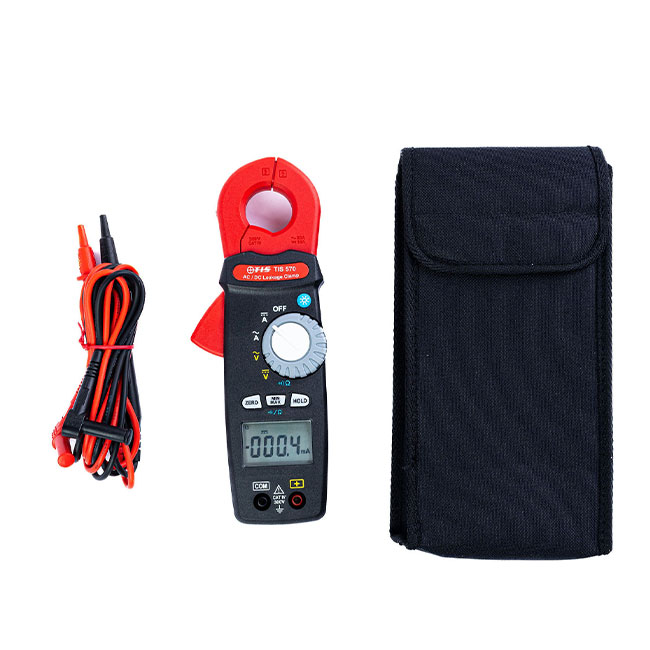Due to the increasing use of electrical equipment in commercial and industrial environments, such as electric vehicle chargers, forklift truck chargers, variable speed drives and invertors for solar panels, we already know that pure DC faults and leakage currents do occur. However, this problem may be much bigger than experts first feared, and some people have dubbed it the ‘silent killer’ on the back of the damaging effects it can have if left undetected. Given we are now widely encouraged to use such electrical equipment, and it provides obvious benefits, it is essential that there is a better general understanding of the problems associated with DC leakage current.
What is leakage current?
Leakage current is the current that flows from ether an AC or DC circuit in equipment to the ground and can be either from the output or the input. Because the alternating current flow with AC currents effectively cancels itself out, the major issue is with DC currents. If the electrical equipment is not properly grounded the current can flow through another path, such as the human body, if an exposed metal feature is touched. This could also happen if the grounding is not sufficient or has been interrupted.
Where does the current flow?
We know that the ground is zero voltage, so grounding is the best way to direct the leakage current. But if equipment is set up in a network, such as a laptop connected to a printer, this connected series of equipment provides a pathway to ground, because leakage current in a laptop is mostly through signal cables connected to other grounded or ungrounded equipment. The same principal applies to electric chargers installed in a series in a car park or a street. If this equipment is properly grounded the leakage current goes to ground, but it may give an electric shock to someone who touches exposed metal parts if the equipment is not properly earthed.
How do we control leakage currents?
Type B RCDs measure the leakage of the current and switch off the installation if the leakage exceeds 6mA, at which point an electrical engineer or installation engineer can detect and solve the problem. Before reaching 6mA, the DC leakage current generated by these loads will pass through the type B RCD without it tripping.
However, this means that RCDs that are connected in series or parallel will detect all or part of this non-dangerous DC leakage current, and if it stays below 6mA for a significant length of time the leakage may only be discovered too late when it has already caused damage. It is therefore very important that RCDs are verified to ensure they don’t lose any performance while this DC residual current is present. The potential risk of this is known as ‘RCD blinding’, which results in the RCDs not being able to ensure their protection function.
What are the dangers of excessive DC leakage currents?
In addition to the potential for electric shock, DC current leakage also causes corrosion because the DC current is conducted through metal and the metal slowly corrodes or rusts. This can be a problem for metal in reinforced concrete and hence can cause instability in the fabric of buildings and other concrete structures, and can cause damaging corrosion in pipes and cables located close to equipment such as chargers or invertors for solar panels.
So building owners where DC equipment is used now face the risk of excessive DC leakage currents. Unless a type B RCD or RDC DD is fitted correctly to protect a circuit, any more than 6mA DC current flowing will blind other RCDs in the circuit and prevent them from tripping, so it is essential that building owners know if they have such an issue.
If, for example, a business has a series of electrical chargers installed in a car park, DC current can propagate along the chargers and blind the RCDs. Even in a residential street installed with chargers, the leakage current can propagate along the street to other buildings, therefore blinding their RCDs. So one house may be okay due to it having a B Type RCD and/or RDC DD feeding the electrical charger, however the leakage current can travel along the street. If left undetected the DC leakage can travel up to five miles, so it is essential that the installation is checked regularly with a suitable clampmeter such as the TIS 570, which can detect and measure both AC and DC leakage, and any leakage found can be attended to and resolved.
Expert help with tackling DC current leakage
It is not currently possible to prevent leakage currents completely, but corrective action is to adapt the electrical installation to produce countercurrents of exactly the same value and which will neutralise the leakage currents.
If you need expert advice on DC current leakage or the range of clampmeters supplied by Test Instrument Solutions, get in touch with our team today and we can ensure you are fully up-to-speed with the issues you face, your responsibilities and how you can battle against DC current leakage.
Please note that this section is for information purposes only. Anyone using equipment referred to in this section must be suitably qualified and/or experienced within the respective field. If in doubt before use, please consult a qualified electrician or engineer & thoroughly read all instruction booklets.